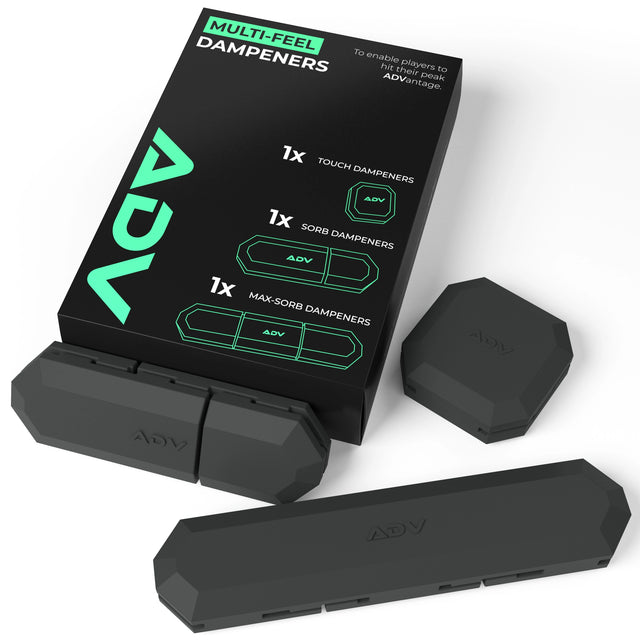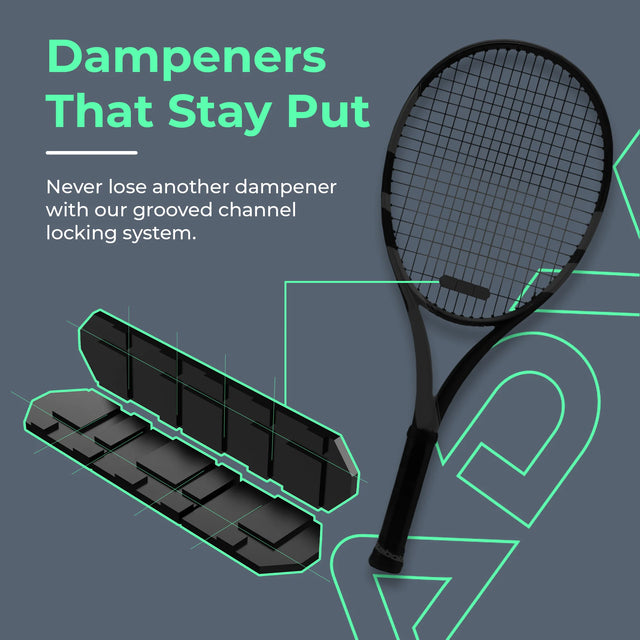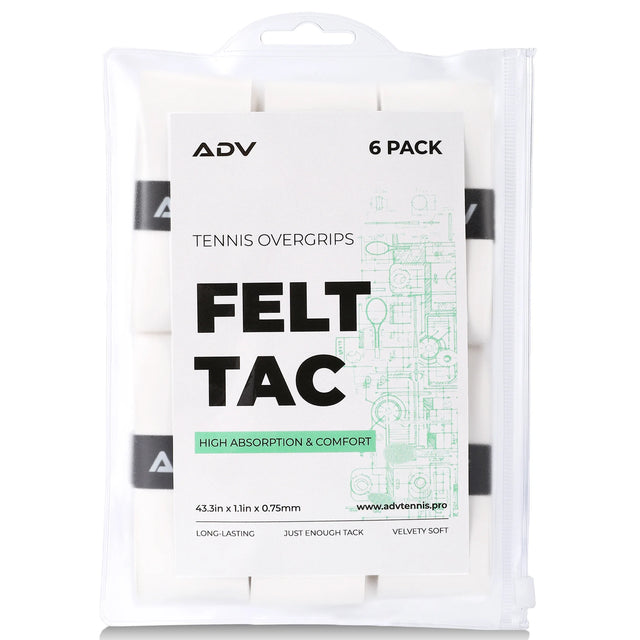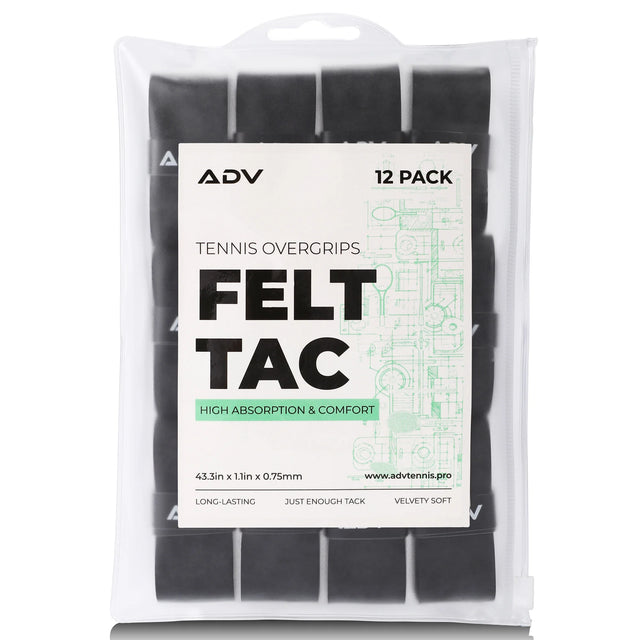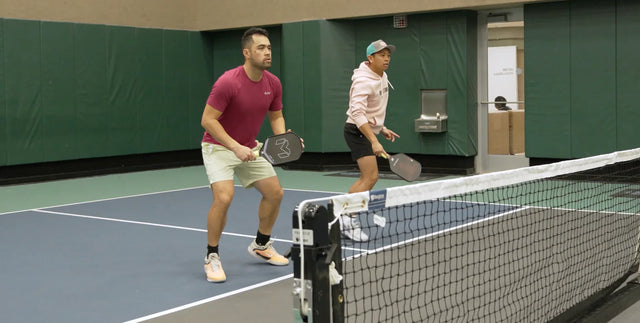Tennis Overgrip Tape vs. Replacement Grip: What’s the Difference & Which Should You Use?
Tennis players of all skill levels understand the importance of having the right grip on their rackets. A good grip not only improves the hold and control during play but also adds comfort and reduces the risk of blisters and slippage. Two popular options in racket grips are tennis overgrip tape and replacement grips. Each serves a unique purpose and offers different benefits and drawbacks depending on the player’s needs and preferences. In this blog post, we will explore the features, benefits, and key differences between overgrip tape and replacement grips to help you determine which is best suited for your tennis game. This comprehensive guide will delve into the materials, application methods, and factors to consider when choosing the grip that will best enhance your playing experience.
Definition and Purpose of Overgrip Tape
Know what tennis overgrip tape is, its intended function, and the reasons players use it on their rackets.
Types and Features of Grips
There are various types, materials, thicknesses, and textures available for both overgrip tape and replacement grips. Tennis overgrip tape is a thin layer of material that tennis players wrap around their racket’s handle, over the existing base grip. It is designed to provide a fresh layer that enhances the feel and control of the racket. The primary purpose of overgrip tape is to ensure that the racket stays securely in hand during play, even when perspiration makes the handle slippery. Overgrips are usually made from absorbent materials that can handle moisture effectively, making them essential for players in hot and humid conditions or those who have naturally sweaty hands. Additionally, they are easy to replace and come in a variety of textures and thicknesses to match player preferences and playing conditions.
Benefits of Using Overgrip Tape for Your Racket
The benefits of tennis overgrip extend beyond simple moisture management. By providing an additional layer on top of the existing grip, overgrips can enhance the comfort of the racket handle, reducing the risk of blisters and irritation from prolonged play. They also allow players to adjust the thickness of the racket handle, which can improve the ergonomics of the grip for players with larger or smaller hands. Furthermore, tennis racket overgrips offer an economical way to maintain optimal grip condition since they can be frequently changed without replacing the more expensive base grip.

Key Differences Between Overgrip Tape and Replacement Grip
The main distinctions between overgrip tape and replacement grip include their construction, usage, and impact on racket feel. Overgrips come in a range of thicknesses and textures, each designed to offer different performance characteristics. A thick tennis overgrip provides more cushioning and is often preferred by players looking for maximum comfort and shock absorption. On the other hand, thinner overgrips give better feel and control, making them suitable for players who value precision and a closer connection to the racket. The texture of the overgrip also plays a crucial role—some overgrips have a tacky feel for a better grip, while others may have a smoother surface to reduce friction against the skin.
Installation and Application Methods
Properly applying or changing your tennis racket’s grip is essential for comfort, control, and overall performance. Whether you’re using overgrip tape for a quick refresh or replacing the base grip for a more substantial upgrade, following the correct steps ensures your grip stays secure and feels great during play. Here’s a step-by-step guide to help you through the process for both overgrip tape and replacement grips:
-
Remove the Old Grip or Overgrip: Before applying a new grip, carefully remove the existing overgrip or replacement grip from your racket handle. Take your time to peel away any adhesive residue or leftover material, as a clean handle is crucial for proper adhesion and a smooth, even finish. If you’re only replacing the overgrip, leave the replacement grip intact unless it’s also worn out. For full grip replacement, strip the handle down to its bare surface.
-
Clean and Prepare the Handle: Once the old grip is removed, thoroughly clean the handle to eliminate dirt, sweat, and oils that could affect the new grip’s performance. Use a dry cloth or a slightly damp towel if needed, ensuring the handle is completely dry before proceeding. Proper preparation prevents slippage and helps the new grip conform closely to the handle’s contours, providing a more comfortable and secure fit.
-
Align and Start Wrapping: Begin by aligning the tapered end of your overgrip or replacement grip at the butt cap (bottom) of the racket handle. Secure the starting point, often with a small adhesive strip or the grip’s own sticky backing. Pay attention to the bevels of the handle, as proper alignment here helps maintain a consistent grip shape and ensures the grip feels natural in your hand throughout play.
-
Wrap with Consistent Tension and Overlap: Wrap the grip or overgrip around the handle in a spiral, maintaining steady tension to avoid wrinkles or loose spots. Overlap each layer by about one-third of the grip’s width, which ensures full coverage and prevents the grip from bunching or slipping during use. Take care to keep the wrap even, as uneven tension can lead to discomfort or premature wear.
-
Secure and Finish the Grip: When you reach the top of the handle, cut off any excess material at an angle for a neat finish. Use the provided adhesive tape or finishing strip to secure the end of the grip in place. For replacement grips, you may also slide a rubber band or finishing ring over the top for added security. Double-check that the grip is smooth, with no bumps or gaps that could affect play.
-
Test and Adjust as Needed: After installation, hold the racket as you would during a match and check for comfort, tackiness, and fit. Make minor adjustments if necessary, such as rewrapping a section or smoothing out uneven areas. A properly applied grip should feel secure and comfortable, enhancing your control and confidence on the court.
Taking the time to install or change your overgrip tape or replacement grip correctly not only extends the life of your equipment but also maximizes your performance and enjoyment on the court. Regular maintenance and proper application ensure that your racket always feels just right in your hand, match after match.
Definition and Purpose of Replacement Grip
Learn what a replacement grip is, how it differs from overgrip tape, and its primary role on a tennis racket.
Understanding the Role of Replacement Grips
A replacement grip is the base layer of cushioning on a tennis racket handle, directly applied over the bare handle or existing residue. Unlike overgrips, which are added over this layer, replacement grips serve as the primary interface between the player's hand and the racket. Their main role is to provide a stable and comfortable foundation that absorbs shock and minimizes the vibrations transmitted during ball impact. This is crucial for players who need consistent, reliable performance from their equipment. Replacement grips are thicker and more durable than overgrips, designed to offer long-lasting comfort and enhanced playability without frequent changes.
Benefits of Replacement Grips for Tennis Rackets
Replacement grips for tennis rackets are fundamental for players looking to maintain or enhance the racket's handle size and feel. These grips provide significant shock absorption, reduce hand fatigue, and increase the overall comfort of the racket during long matches or intense practice sessions. Moreover, a fresh replacement grip can revive an old racket, giving it a new life by improving the handle’s feel and control. For players experiencing slipping issues due to worn-out grips, replacing the grip can dramatically improve grip security and racket handling, thereby enhancing precision and confidence in strokes.
Synthetic, Leather, and Cushioned
Replacement grips come in various materials, each offering distinct advantages. Synthetic grips are popular for their versatility and range of textures, from smooth to tacky, allowing players to choose based on their comfort and moisture-management needs. Leather grips, on the other hand, are prized for their durability and firm feel, providing a traditional, solid grip that many advanced players prefer. Cushioned grips are designed with additional padding, which helps in absorbing more shock and providing a softer touch, suitable for players with sensitive hands or those prone to injuries. Each type of grip caters to different player preferences and requirements, making the choice highly personal.
How to Apply a Replacement Grip to Your Racket
Applying a replacement grip to your tennis racket is a straightforward process that can significantly impact your playing experience. Start by removing the old grip and cleaning the handle thoroughly to ensure a smooth surface. Begin at the butt cap of the racket, securing the tapered end of the new grip with its adhesive. Wrap the grip tightly around the handle in a diagonal pattern, slightly overlapping each layer to ensure even coverage and prevent bulging. Continue wrapping until you reach the top of the handle, then cut off any excess grip material. Secure the end with the provided adhesive tape or a finishing strip. Proper application ensures that the grip is smooth without any bumps or gaps, offering optimal comfort and control.

Choosing Between Overgrip Tape and Replacement Grips
Factors to Consider: Playing Style and Comfort Needs
When selecting between tennis overgrip tape and replacement grips, understanding your unique playing style and comfort needs is essential. Each type of grip caters to different preferences and requirements, impacting your overall performance and satisfaction on the court.
-
Tackiness and Absorbency: Overgrip tape is highly valued by players who need extra tackiness to maintain a secure grip during sweaty, intense matches. This is especially beneficial in high-humidity environments where slippage can affect play.
-
Shock Absorption: Replacement grips are designed to provide substantial cushioning, making them ideal for players who experience frequent arm strain. Their shock-absorbing qualities help mitigate the impact transferred from the racket to the arm, essential for maintaining long-term joint health.
-
Support for Aggressive Play: Players engaged in fast-paced, aggressive styles will find overgrip tape advantageous due to its ability to enhance grip security and allow for quick hand movements without losing control of the racket.
-
Comfort for Controlled Play: For those who prioritize a controlled play style, replacement grips offer a thicker, more padded feel that enhances comfort and stability, allowing for precise strokes and better racket handling.
-
Influence on Racket Feel: The choice between overgrip tape and replacement grips also affects the overall feel of the racket in your hands. Overgrips allow for a closer feel of the underlying handle, while replacement grips can alter the handle’s thickness and firmness.
Selecting the right grip based on these factors ensures that your racket is an extension of your arm, finely tuned to your specific needs and playing style.
Hand Size and Personal Preferences in Grip Feel
The size of your hands and your personal preference in grip feel play critical roles in choosing the right grip. Players with larger hands might find a thicker replacement grip more comfortable as it increases the overall diameter of the tennis racket handle grip, providing a better hold and reducing the chance of the racket twisting during play. Conversely, those with smaller hands may prefer a thinner overgrip for a closer feel of the handle and better maneuverability. The texture of the grip also matters—some players prefer a smooth finish for easier movement in the hand, while others opt for a textured grip for additional control and prevention of slippage.
When and How Often to Replace Grips
There are guidelines for determining the best time to change either an overgrip or a replacement grip to maintain optimal performance. The frequency with which you need to replace your grip is also an important factor. Overgrip tape, while easier and cheaper to replace, tends to wear out faster than replacement grips and might need changing several times throughout a season, depending on usage intensity. This makes overgrips suitable for players who prefer to change grips often or play in conditions that cause rapid wear. Replacement grips, though more durable and longer-lasting, require more effort and expense to replace. They are suitable for players who do not mind a longer interval between changes and prefer a more permanent solution for comfort and shock absorption.
Budget Considerations and Cost-Effectiveness
Finally, budget considerations and cost-effectiveness are crucial in deciding between overgrips and replacement grips. Overgrips are generally less expensive per unit and can be a cost-effective option for players who are comfortable replacing their grips frequently. This ongoing cost needs to be balanced against the benefit of always having a fresh grip with optimal performance. Replacement grips, while initially more expensive, may prove more economical over time due to their longer lifespan and the less frequent need for replacement. Balancing these costs against your playing frequency and performance needs will help you make a financially sensible choice that does not compromise on quality or comfort.
Throughout this discussion, we've explored the distinct characteristics and benefits of both tennis overgrip tape and replacement grips. Overgrip tape is primarily favored for its tackiness and moisture absorption, making it an excellent choice for players who engage in high-intensity matches where sweat and humidity are factors. It allows for frequent changes, ensuring a fresh grip for each play session without significant cost. On the other hand, replacement grips provide a more durable and cushioned foundation, beneficial for players seeking comfort and shock absorption to reduce the risk of arm strain and other injuries. These grips are integral to the racket's structure, offering a long-term solution for those who do not wish to frequently adjust their grip setup.



